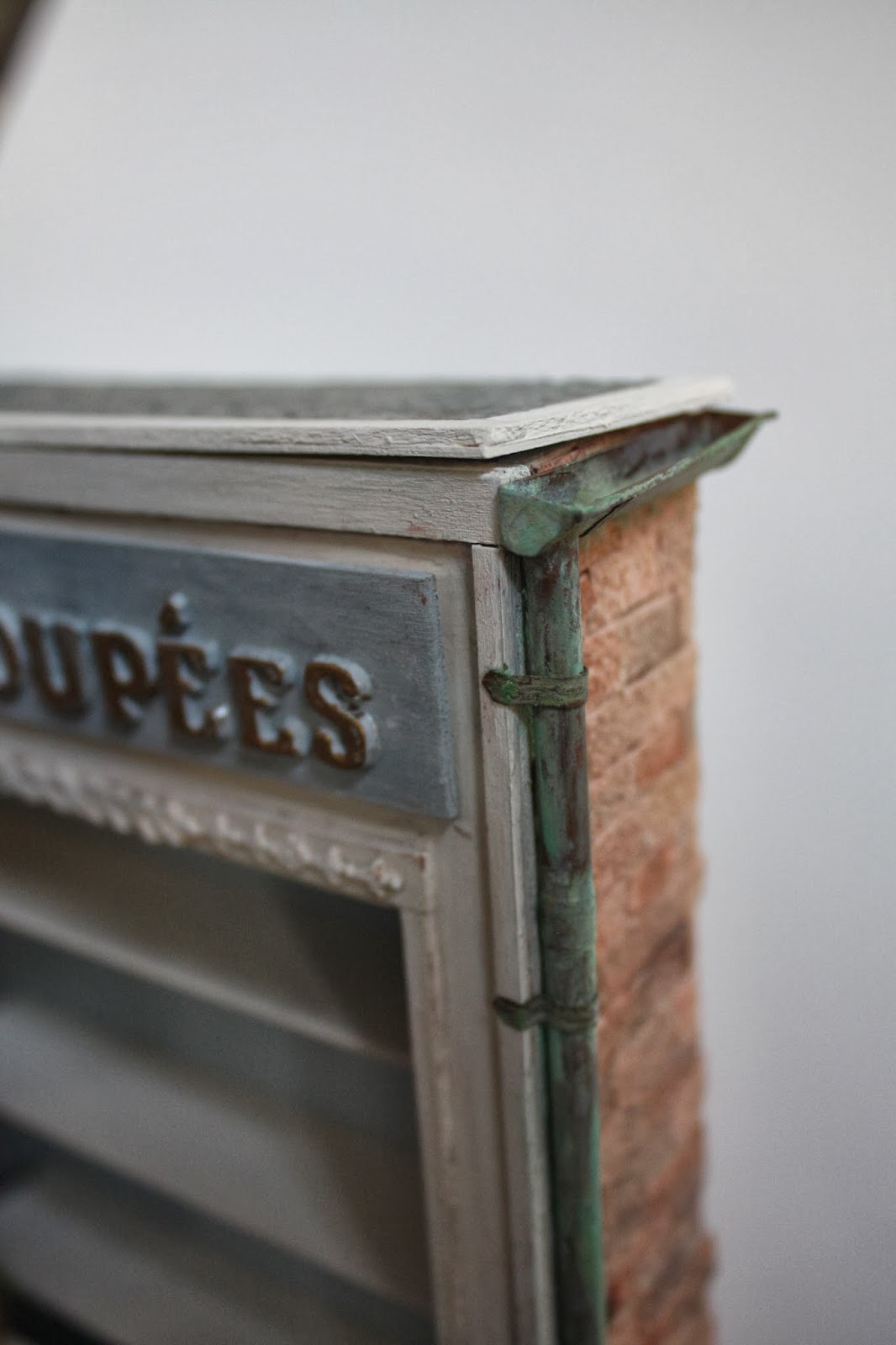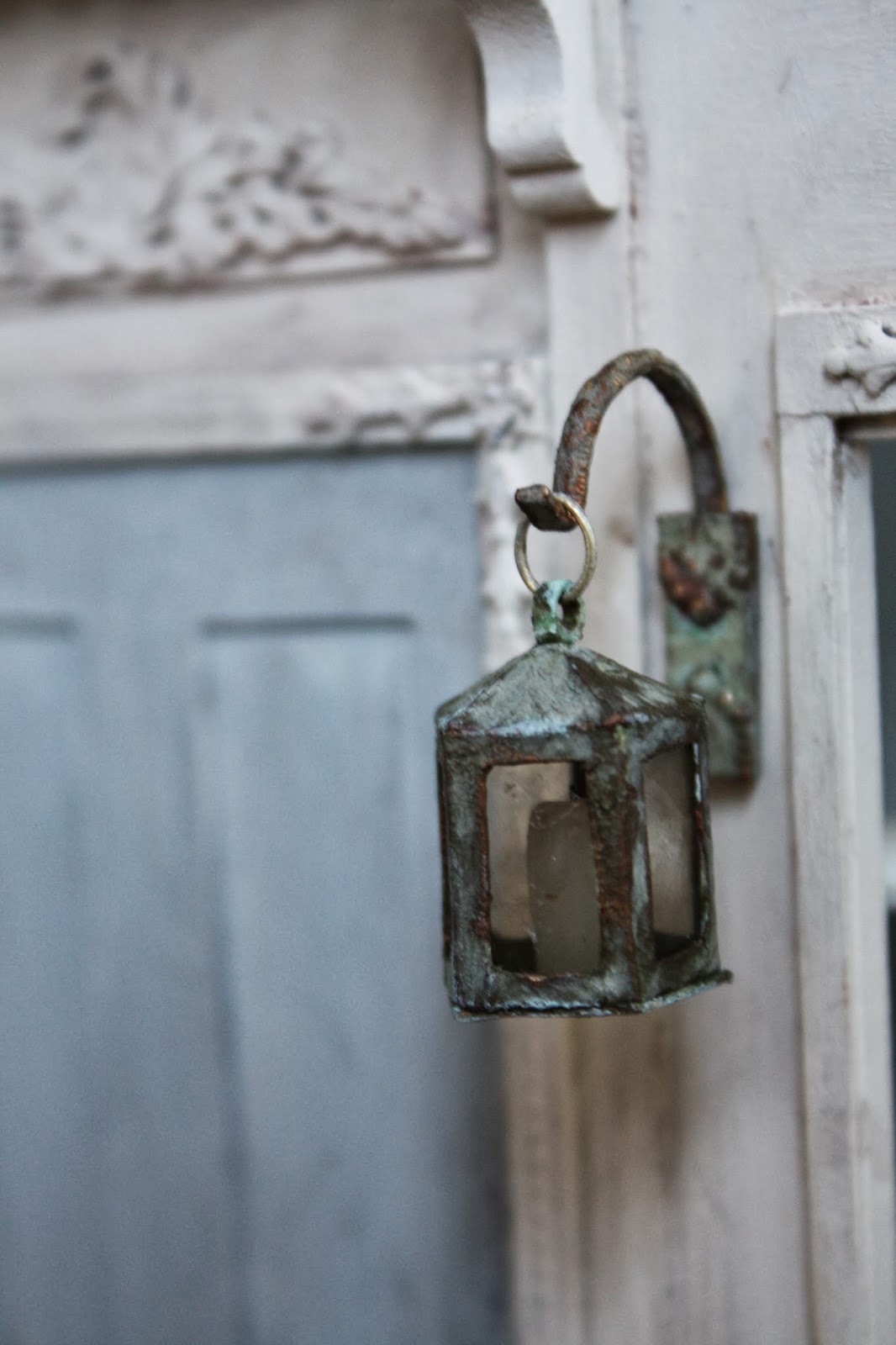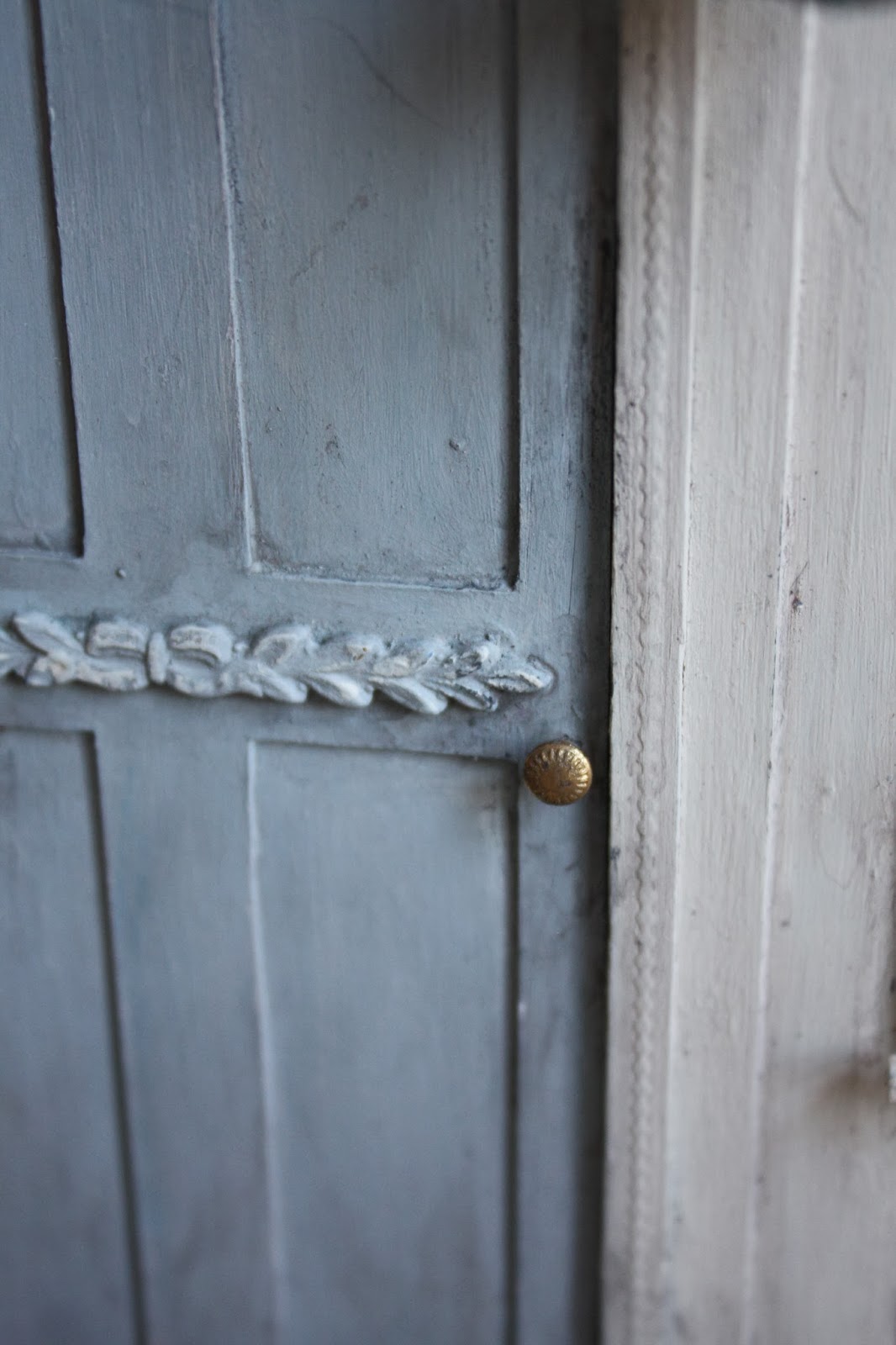At first glance, it probably doesn’t look like I’ve made much
progress on my little shop since the last time I posted about. But in reality, I’ve had to redo almost everything. The only thing that was perfectly fine was the front wall of the shop. Fortunately, that front wall was the only piece I'd put a lot of time into. In the last
post, I mentioned that the structure was warping. Since the back and sides weren't going to be very visible, I figured I'd just slap a layer of paperclay bricks over the whole thing and call it a day. I didn't think about what a effect the damp clay would have on foamcore...

Here's a photo of the paperclay bricks that caused the warping. I used a textured sheet of plastic (sold as a fondant mold for cake decorating) to make the brick pattern. This is one of the quickest ways I know to get miniature bricks.Though the grout lines are far too big, the bricks themselves are pretty close to 1/12th scale, and can look pretty good in certain situations. I use a crumpled piece of tin foil to texture the bricks.
The warping turned out to be a blessing in disguise. The paperclay was a quick solution so I could get on with the fun part, but it didn't look as realistic as I'd wanted. I like this second version of the stones so much better!
The second time around, I decided to go with a technique I'd never tried before: egg carton stones.
So much more realistic! In the photo above, you can see the new sidewalk made of cardboard egg cartons on top, and the old paper clay sidewalk below. I used another fondant mold that was supposed to look like cobblestones, which was a definite mistake. Aside from the whole warping issue, the mold just wasn't deep enough to make realistic stones.
Here's a closeup of the new egg carton stones. I followed Casey's tutorials
here, then added a little model railroad dirt between the cracks. I still have to do the sides and back walls (using sandpaper bricks for a change of texture) but I couldn't resist making a tiny weed.
I've been hording a few Clive Brooker mossy pots for years, but I may use one on this project. I've already filled it with dirt, (painted styrofoam) but have yet to plant it. I have quite a few irises left over from the music room, which might work, but I'm holding off until the big decisions are all made.
Another big change I made was shifting the shop over on the base. In the first version, (above) the shop was centered, with an awkward little strip of sidewalk on each side. But while playing around with various props, it became clear that there just wasn't enough space for all the things I wanted outside my shop. Moving the shop to the left side of the base gave me a lot more room to play without making the overall size any larger.
I made a few (relatively insignificant) mistakes in putting together version two of the shop. The first was that I mis-measured the depth of the shop, resulting in a narrow gap between the stones of the sidewalk and the shop. I could have easily filled this in with a few more stones, but decided it would be easier and more interesting to fill the space with dirt and weeds.
The second mistake was painting the interior of the shop the wrong color. I was sure I'd painted the inside using Folk Art's baby blue (on the right above). Instead, it seems I'd used their Dove Grey (left).
The Baby Blue turned eye-searing when it was covering the full wall. I've never repainted anything so quickly in my life!
Getting to this point was exciting, since it meant I could take a break from the big, structural stuff to work on some fun details.
I made the lantern out of card stock painted with the special oxidizing copper paint I wrote about
here. I made it five-sided, just to make it a bit more interesting. The "old glass" is mica. I bought some on eBay two years ago and have used up almost all of it on lanterns and similar projects. The hook for the lantern is just a cheap metal wedding ring (the same type as I used to make this
umbrella stand,) with a back plate of card stock, scrap wood, and jewelry findings.
I liked the copper lantern so much that I decided to make a copper awning over my door. The top is a piece of strip wood, covered in card stock to hide the wood grain. The scallops hanging down were Mom's idea.
Here's a picture of the top. You can really see all the various colors of the oxidized copper here.
One more picture of the entrance.
I added a boot scraper near the door. It's made of card stock and fancy toothpicks, painted with another faux finish paint set to look like iron. For some reason I had a really hard time getting the rusting solution to work, though it's worked perfectly when I've used the paint before.
I added a bit more dirt to the door itself, especially around the handle and the bottom of the door. I'm trying to find a good balance between realistically old and worn,but not neglected. The watercolor pencils I'm using are great, because they can easily be washed off if a section gets too dark.
Here's a side view showing just how shallow the shop is. I'm completely out of narrow strip wood, so I haven't been able to cover the white foam yet, and then all the brickwork needs to be done.
The shop also still needs its roof, and a piece of glass for the front window.
The sign is just temporary and is held in place with a bit of sticky wax. I'm planning to paint a more elaborate one eventually. In fact, I'm thinking about making several signs for the shop, so that I can rotate a few different collections through the window display. I'm not quite sure whether this idea counts as restraint restraint or indulgence.
The front of the shop will remain a removable panel so that I can change the window displays.
This sophisticated system of strip wood holds the front in place :-) The slight flexibility is actually an advantage here, because it makes it very easy to get the front in and out.
Hope you've enjoyed seeing how this little project is coming along!






























































.jpg)
































































.JPG)























+(2).jpg)






















